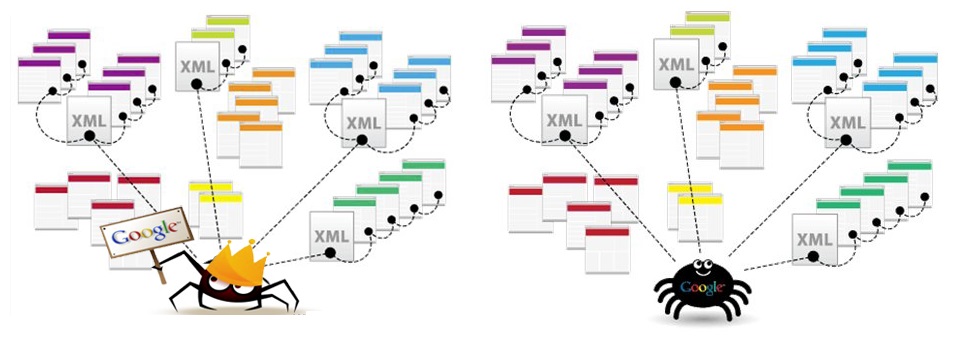
An XML sitemap is a graphic representation of the arrangement of pages of your website. Whether you have a small or large site, you understand that the way the pages are arranged is essential. The plan of your site determines how easy it is for people to get the information that they need. Importantly, the XML sitemap has severe effects on your SEO performance.
Here are some of the most critical ways in which the map affects the SEO status of your website.
#1 Determines the rank performance of sites
A simple way of visualizing the importance of XML sitemaps on the ranking of sites is conducting a simple search of standard websites. If you carry out the best rank tracker by Serpbook kind of search, you will realize that the performance of sites always changes. For example, your site may rank very high when you use specific keywords by trail if you change the search terms.
Although many reasons cause changes in rank performance, one of the most common ones is the way your site is arranged. An XML sitemap shows ow the various pages on your site are laid out. Thus, search engine algorithms tend to crawl pages that have sitemaps and rank them higher than those who lack the maps.
#2 Increases the visibility of your site
Search algorithms usually rely on URL links to crawl all the pages on your site. If some links are not visible, then the algorithm will not crawl the pages that are related to the unavailable links. If common search engines do not crawl some of the pages on your site, then the algorithms may rank your page poorly.
The good news is that having an XML sitemap helps to reduce the possibility of such occurrences. A good map usually lists all the URLs that are found on your website. When you have such a map and successfully send it to your search engine, you provide all the links to the various pages that form your website. In essence, you make it easy for the algorithm to access every part of your site when you provide the map. Thus, having such a map makes your site visible to crawlers, thus increasing its overall rank.

#3 Submitting XML sitemaps allows you to get feedback
If you rely on the Google search engine, then you can submit your XML sitemaps in three simple ways. First, you can indicate the URL of your sitemap in your robots.txt file. Second, you can send the map to Google via your Google Webmaster tools platform. Google has a very comprehensive platform for webmasters that you can use for this purpose. Third, you can use a unique tool called, the ‘HTTP Ping’ to send your file to Google.
Once you have successfully informed the company about your sitemap, you can get detailed feedback on it after some time. The feedback contains typically information about the suitability of your sitemap and how well it can contribute to your SEO ranking. Also, the feedback information that you receive from Google includes specific errors that may be in your sitemap. Thus, you can use the information to address various shortcomings on your sitemap. Similarly, based on the feedback, you can solve specific problems on your site to improve your SEO performance.
#4 Guides the search algorithm on how to crawl your site
Typically, a good XML sitemap contains more information than mere details about the various pages that form a website. In addition to the arrangement of pages, a sitemap may have specific information for the bots that crawl web pages. Prioritizing some pages over the others is possible.
You can accomplish this goal by inserting unique tags on various URLs. When the bots see the tags, they tend to rush to such URLs at the expense of other pages whose addresses do not have the marks.
You can effectively use such tags to complement the work that is done by robots.txts. Typically, this tool enables you to banish crawl bots from working on some parts of your site. Thus, when you use the tools, you prevent specific pages of your site from being ranked on search engines.
In practice, robots.txts and tags on XML sitemaps can be used to direct the algorithm to crawl various pages first and avoid others entirely. Therefore, by using these two tools in your sitemaps, you can effectively influence the SEO performance of your website.
In conclusion, an XML sitemap plays a critical role in determining the overall SEO performance of your site. If you develop and submit the file, you get detailed feedback on the architecture for your site. Also, you can use the map to influence how the crawl bot examines your pages. By so doing, you can effectively control how various search engines rank your website.

